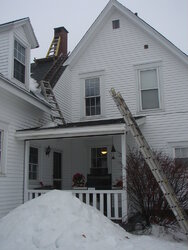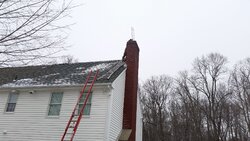I'm pretty much a do it yourself person. Not sure if I should attempt cleaning my flue.
Wondering if it is easy to clean a 30' flue from INSIDE the home.
I have a regency 3100, and used the "non-smooth" continuous flex type piping.
Since last season was my first, it is time to decide if I should purchase tools and do it myself, or hire someone.
Thoughts? Suggestions on tools?
Thank everyone for all they have done to help me !
!
David
Wondering if it is easy to clean a 30' flue from INSIDE the home.
I have a regency 3100, and used the "non-smooth" continuous flex type piping.
Since last season was my first, it is time to decide if I should purchase tools and do it myself, or hire someone.
Thoughts? Suggestions on tools?
Thank everyone for all they have done to help me
 !
!David



 It is only once a year after all! Thanks for the reply!
It is only once a year after all! Thanks for the reply!
